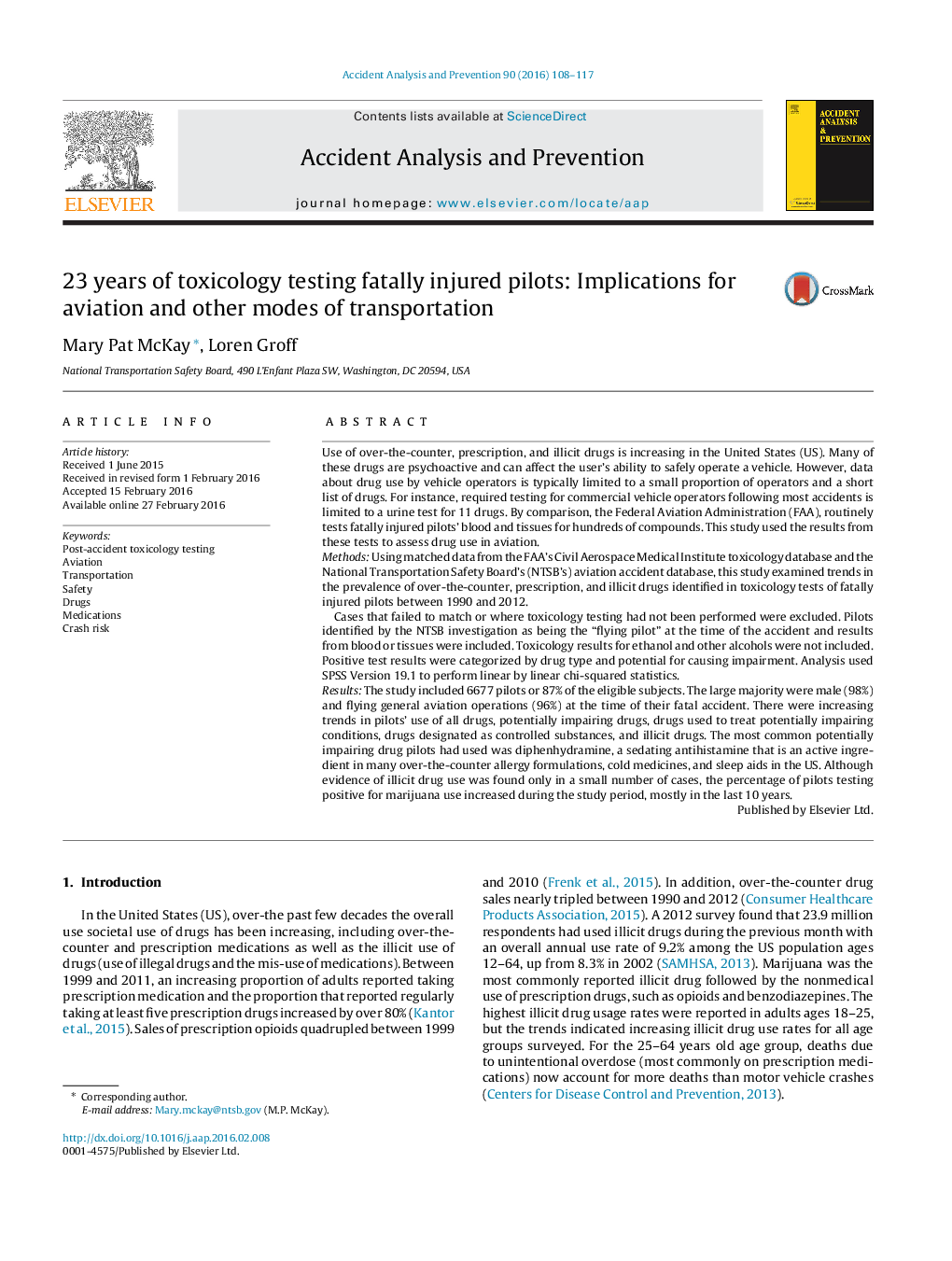| کد مقاله | کد نشریه | سال انتشار | مقاله انگلیسی | نسخه تمام متن |
|---|---|---|---|---|
| 572069 | 1452907 | 2016 | 10 صفحه PDF | دانلود رایگان |
• We reviewed 23 years of toxicology test results from fatally injured pilots in the US.
• Trends in drug use of all types increased over the course of the study.
• Diphenhydramine, a sedating antihistamine, was the most frequent drug identified.
Use of over-the-counter, prescription, and illicit drugs is increasing in the United States (US). Many of these drugs are psychoactive and can affect the user’s ability to safely operate a vehicle. However, data about drug use by vehicle operators is typically limited to a small proportion of operators and a short list of drugs. For instance, required testing for commercial vehicle operators following most accidents is limited to a urine test for 11 drugs. By comparison, the Federal Aviation Administration (FAA), routinely tests fatally injured pilots’ blood and tissues for hundreds of compounds. This study used the results from these tests to assess drug use in aviation.MethodsUsing matched data from the FAA’s Civil Aerospace Medical Institute toxicology database and the National Transportation Safety Board’s (NTSB’s) aviation accident database, this study examined trends in the prevalence of over-the-counter, prescription, and illicit drugs identified in toxicology tests of fatally injured pilots between 1990 and 2012.Cases that failed to match or where toxicology testing had not been performed were excluded. Pilots identified by the NTSB investigation as being the “flying pilot” at the time of the accident and results from blood or tissues were included. Toxicology results for ethanol and other alcohols were not included. Positive test results were categorized by drug type and potential for causing impairment. Analysis used SPSS Version 19.1 to perform linear by linear chi-squared statistics.ResultsThe study included 6677 pilots or 87% of the eligible subjects. The large majority were male (98%) and flying general aviation operations (96%) at the time of their fatal accident. There were increasing trends in pilots’ use of all drugs, potentially impairing drugs, drugs used to treat potentially impairing conditions, drugs designated as controlled substances, and illicit drugs. The most common potentially impairing drug pilots had used was diphenhydramine, a sedating antihistamine that is an active ingredient in many over-the-counter allergy formulations, cold medicines, and sleep aids in the US. Although evidence of illicit drug use was found only in a small number of cases, the percentage of pilots testing positive for marijuana use increased during the study period, mostly in the last 10 years.
Figure optionsDownload as PowerPoint slide
Journal: Accident Analysis & Prevention - Volume 90, May 2016, Pages 108–117
